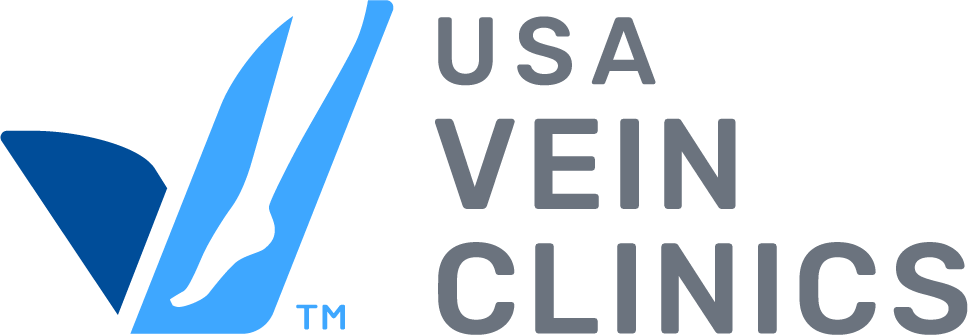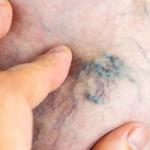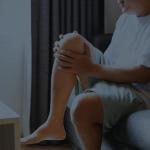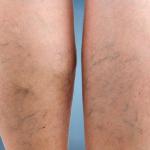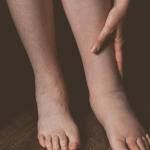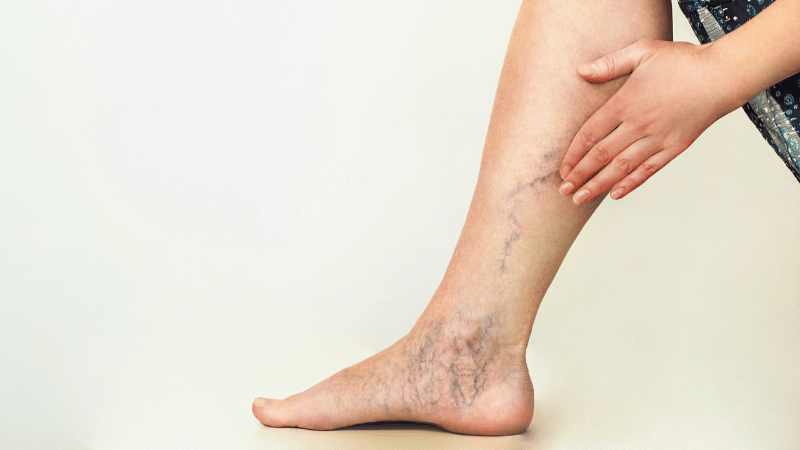
There are many factors that can make your veins appear more visible temporarily, such as exercise, dehydration, or wearing tight clothing. However, if the veins in your legs are showing up more frequently and prominently over time, this could be a sign of vein disease or another health condition.
It’s important to understand why your veins might be more visible, so you know when visible veins are a cause for concern and when they’re harmless.
Click to Call and Schedule a Consultation
What Causes Veins to Be More Visible?
Your veins carry deoxygenated blood back to the heart, while arteries carry oxygenated blood from the heart to the rest of the body. The veins in your legs, feet, and ankles have to work against gravity to move blood upward to the heart.
Some veins are closer to the skin’s surface. These are superficial veins.
Because they’re close to the skin, these veins are visible. How easy they are to see depends on several factors:
- Skin tone: If you have a lighter skin tone, your veins will be more visible than someone with a darker skin tone. People with fairer skin might also notice clearer colors, for example, your veins might look green.
- Age: Skin becomes thinner over time because the body produces less collagen as we age, making it easier to see veins through the skin.
- Temperature: Are you wondering, why can I see my veins more in the summer? Heat can cause veins to enlarge. It also makes your vascular system work harder overall, causing veins to appear more prominent.
- Exercise: If you notice visible veins when you exercise, this may be a sign that your cardiovascular system is working properly. In particular, weight lifting often results in protruding veins due to low body mass index (BMI).
- Dehydration: If you are not drinking enough water, your blood can thicken. Thicker blood requires more pressure to pump through the body. This extra pressure can cause veins in your legs or feet to bulge.
- Weight: Because excess weight can place additional strain on your veins, being overweight or obese can cause vein issues, making them stand out.
- Prolonged sitting or standing: Individuals on their feet or sitting throughout the day are more likely to develop visible veins.
- Hormones: Hormonal changes for women during pregnancy and menopause can cause veins to be more visible. Pregnancy also involves increased blood volume, which leads to the expansion of blood vessels and more prominent veins.
Some of these factors, such as being overweight and having a sedentary lifestyle can damage your veins over time, causing the valves to stop working properly.
When the valves in your veins weaken, they can no longer pump blood to the heart effectively. That adds even more pressure to vein walls and can result in bulging, twisted veins and more permanent visible veins known as spider veins, varicose veins, and reticular veins.
This vein damage leads to a serious condition called vein disease.
“Vein disease occurs when tiny vein valves in your legs malfunction and cause blood to pool in the lower extremities,” says Dr. Yan Katsnelson, CEO and Founder of USA Vein Clinics.
Are Visible Veins in the Legs a Sign of Vein Disease?
If your veins are more visible, it’s possible you have vein disease, also known as chronic venous disease (CVD) or venous insufficiency. This condition is very common — it’s estimated that 25 million adults in the US have varicose veins from vein disease, and six million have severe vein disease.
Common signs and symptoms of vein disease include the following:
- Varicose veins — raised veins that are usually blue in color
- Spider veins — superficial veins that look like red webs of veins under the skin
- Reticular veins — similar to spider veins but appear bluish or purplish
- Restless legs
- Leg cramping, especially at night or after sitting for long periods
- Leg swelling
- A feeling of heaviness of fatigue in the legs
- Leg pain
- Venous ulcers or other skin changes, such as red, itchy skin
If you’re noticing visible veins in the legs, feet, and ankles and don’t think it’s caused by something temporary, such as warm weather or dehydration, you might want to consult with a specialist near you to find out if you have vein disease or another venous condition.
Learn if Visible Veins Are a Sign of Vein Disease at USA Vein Clinics
At USA Vein Clinics, our doctors will examine your veins to determine what’s causing your symptoms. They specialize in treating vein disease using advanced, minimally invasive treatments, allowing you to get relief and improved vein health with a safe and effective procedure that won’t require a hospital stay or a long recovery.
Call us today to schedule an appointment at 888.768.3476 or book an appointment online with one of our vein specialists and find if your visible veins are a cause for concern.
Schedule an Appointment Online
Frequently Asked Questions About Visible Veins
Why Can I See My Veins?
It’s normal to see some veins under the skin’s surface after exercising, when the weather is warm, or if other factors are causing your body to work harder to pump blood. You also might be able to see your veins more clearly as you age and your skin becomes thinner.
Other factors that can make veins more visible include hormonal changes, weight gain, a lack of exercise, and vein disease.
Why Are My Veins So Visible on My Hands?
Although the lower extremities are a common site for visible veins, you might also see your veins clearly on your hands. For example, if you’re dehydrated, the veins in your hands might appear more raised above the skin or darker in color. After drinking enough water, you might notice that they start to fade in appearance.
Older adults are more likely to see visible veins on their hands, while younger people might not see their veins as easily because their skin hasn’t started to thin.
If Blood Is Red, Why Are My Veins Different Colors?
Even though your blood is red, your veins might appear blue or greenish because of your skin tone and how light interacts with the pigments in your skin.
Still Need Answers? Submit A Question for Our Doctors
Interested in reading more of our blogs?
- CAN VARICOSE VEINS GO AWAY?
- WHAT KIND OF DOCTOR TREATS VARICOSE VEINS?
- HOW DO YOU FIX POOR CIRCULATION?
- HOW TO GET RID OF VARICOSE VEINS AND SPIDER VEINS?
Medically Reviewed By:
Dr. Yan Katsnelson is a philanthropist, business owner, and highly skilled cardiac surgeon. He is the Founder and CEO of USA Vein Clinics, which is part of USA Clinics Group, the parent company of USA Fibroid Centers, USA Vascular Centers, and USA Oncology Centers, with more than 100 facilities nationwide. Dr. Yan has established himself as a strong advocate for accessibility and affordability of the most advanced medical care close to home. His mission is to create a positive experience for each patient with compassionate, personalized, and expert care.
